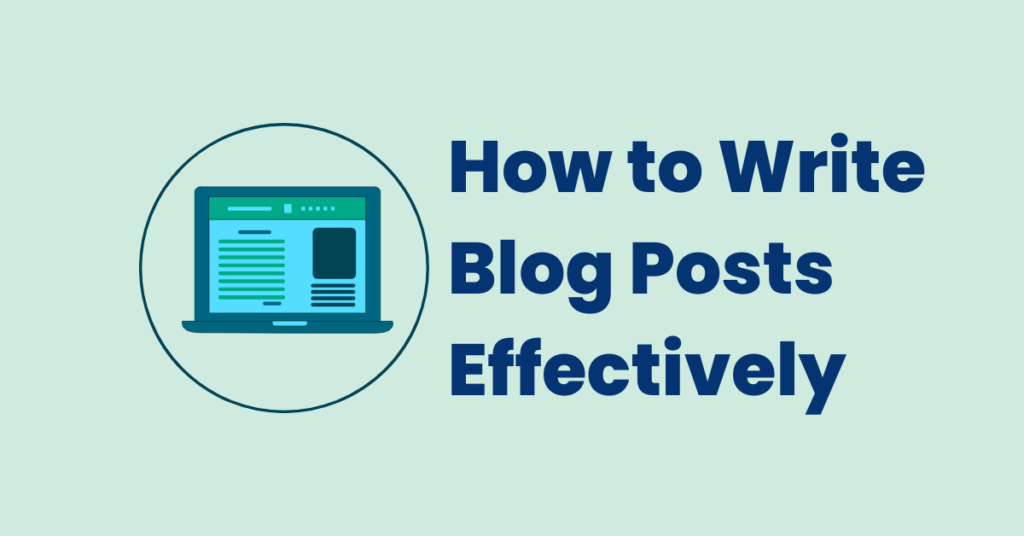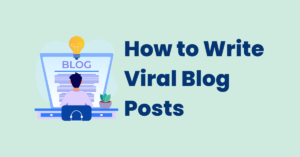How to Write Blog Posts Effectively
Writing blog posts effectively is crucial for attracting readers, engaging them, and achieving success in the online world. Whether you are a seasoned blogger or just starting out, mastering the art of effective blog post writing is essential to make your content stand out and drive traffic to your website. In this comprehensive guide, we will explore various strategies, tips, and techniques to help you write blog posts that captivate your audience, improve your search engine rankings, and establish yourself as an authority in your niche.

How to Write Blog Posts Effectively
To write blog posts effectively, it’s important to understand the key components that make up a successful article. Here are some essential tips to keep in mind:
Understand Your Target Audience
Before you start writing, take the time to identify and understand your target audience. Who are they? What are their interests, needs, and pain points? By gaining a clear understanding of your audience, you can tailor your content to meet their specific expectations and provide value that resonates with them.
Conduct In-Depth Research
Research forms the backbone of any well-written blog post. Take the time to gather relevant and accurate information on your chosen topic. Use reputable sources such as authoritative websites, research papers, and industry publications. This will help you present well-rounded and insightful content that adds value to your readers.
Craft a Compelling Title
Your blog post’s title is the first impression your readers will have of your content. It should be catchy, concise, and pique the reader’s curiosity. Incorporate the keyword “How to Write Blog Posts Effectively” naturally into your title, as it aligns with the topic of this article and improves search engine optimization (SEO).
Use Engaging Headings and Sub-headings
Headings and sub-headings break up your content, making it easier for readers to scan and understand. Incorporate the keyword “How to Write Blog Posts Effectively” into some of your headings and sub-headings, ensuring that they accurately reflect the content they introduce. This helps with SEO and improves the overall structure of your article.
Create an Engaging Introduction
The introduction is your opportunity to hook readers and entice them to continue reading. Start with a captivating opening sentence that grabs their attention and clearly states the purpose of your article. Incorporate the keyword “How to Write Blog Posts Effectively” within the introduction to reinforce the relevance of your content.
Provide Valuable and Actionable Content
Ensure that your blog post delivers value to your readers by providing them with actionable insights, tips, or advice. Share your expertise and unique perspectives on the topic, and support your statements with evidence or examples. This helps establish your authority and credibility among your audience.
Use Visuals to Enhance Readability
Visuals such as images, infographics, and videos can enhance the readability and engagement of your blog post. Use relevant and high-quality visuals to support your content, break up text-heavy sections, and make your post more visually appealing.
Optimize for SEO
Ensuring that your blog posts are optimized for search engines is essential for attracting organic traffic to your website. Incorporate relevant keywords naturally throughout your content, including the keyword “How to Write Blog Posts Effectively” in strategic places. Use proper heading tags (H2, H3, etc.), meta descriptions, alt tags for images, and include internal and external links to high-quality websites such as Wikipedia to boost your SEO efforts.
Edit and Proofread
Before publishing your blog post, always take the time to edit and proofread it for errors, clarity, and coherence. Ensure that your content flows smoothly, eliminate grammatical or spelling mistakes, and check that your formatting is consistent. This will enhance the overall quality and professionalism of your blog post.
Encourage Engagement and Interaction
End your blog post with a clear call-to-action (CTA) that encourages readers to engage with your content. This could include asking them to leave comments, share their thoughts or experiences, or subscribe to your newsletter. Engaging with your audience fosters a sense of community and helps build a loyal readership.
FAQs
How long should a blog post be?
There is no one-size-fits-all answer to this question. The ideal length of a blog post depends on various factors, including your audience, topic, and objectives. However, in general, longer blog posts (1500+ words) tend to perform better in terms of SEO and audience engagement.
How often should I publish new blog posts?
Consistency is key when it comes to publishing blog posts. Set a realistic publishing schedule that aligns with your resources and goals. Whether you choose to publish weekly, bi-weekly, or monthly, the key is to maintain a consistent flow of fresh and valuable content for your audience.
Should I include images in my blog posts?
Yes, incorporating images in your blog posts is highly recommended. Visuals help break up the text, make your content more visually appealing, and improve the overall user experience. Ensure that the images are relevant, high-quality, and properly credited, if necessary.
How can I promote my blog posts?
Promoting your blog posts is essential to increase visibility and attract readers. Utilize various marketing channels such as social media platforms, email newsletters, guest blogging, and influencer collaborations. Engage with your audience and encourage them to share your content within their networks.
Can I monetize my blog posts?
Yes, there are several ways to monetize your blog posts. You can explore options such as affiliate marketing, sponsored content, display advertising, selling digital products or services, and offering premium content or memberships. Explore various monetization strategies and select the ones that best fit your niche and target audience.
How long does it take to see results from blogging?
The timeline for seeing results from blogging varies greatly depending on various factors such as your niche, content quality, promotion efforts, and SEO strategies. Generally, it takes time to build an audience and gain traction. With consistent effort and quality content, you can start seeing positive results within several months.
Conclusion
Writing blog posts effectively is a skill that can be honed with practice and a deep understanding of your target audience.
By following the strategies and tips outlined in this guide, you can create engaging, informative, and well-optimized content that attracts readers, boosts your online visibility, and establishes your authority in the digital landscape.
Remember to write with authenticity and passion, always keeping your readers’ needs and interests at the forefront. Happy blogging!
Read More







